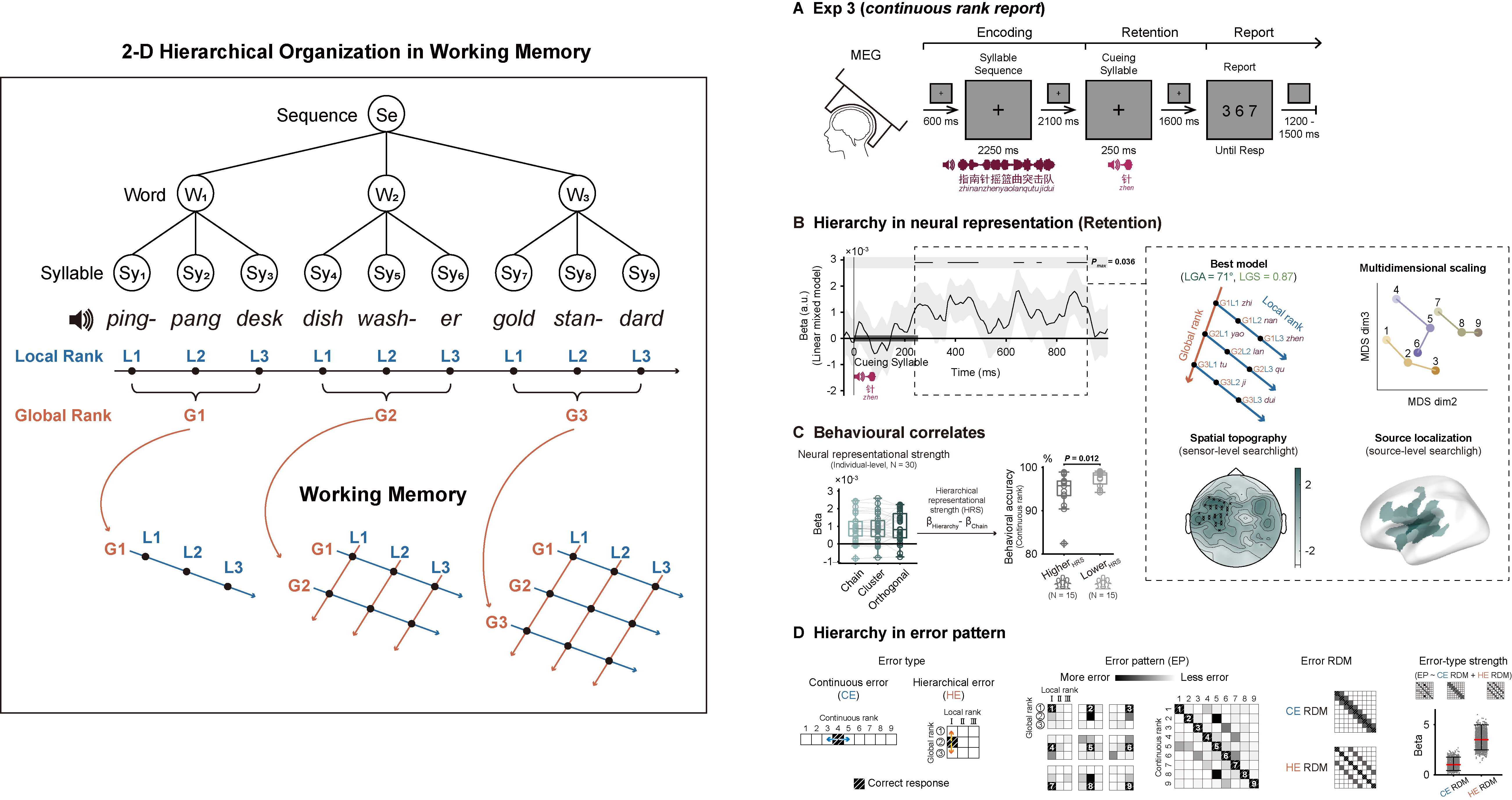Nature Human Behavior | Dr. Huang Luo: Two-dimensional neural geometry underpins hierarchical organization of sequence in human working memory

1D-to-2D hierarchical folding of syllable sequence in human working memory
WM is constructive in nature. Instead of passively storing information, WM systems actively build new representations to fulfill task-specific goals. Reconfiguration of successive items into hierarchical embedded chunks or schemas is a major memory operation to overcome capacity limits, promote flexible goal-directed processing, and facilitate generalization in novel contexts. However, it remains unknown how human brains implement the hierarchical reorganization of sequence in WM.
In three EEG/MEG experiments, Huan Luo’s group examined how WM reorganizes serially presented items into hierarchically embedded structures. Hierarchical structure refers to the grouping of primitive units into chunks and super-chunks, and is a fundamental operation to balance WM capacity limits and processing flexibility. We asked human subjects to retain a sequence of syllables grouped into multisyllabic chunks in WM and examined the neural geometry of syllable sequences. We demonstrate that the 1-D sequence is represented by 2-D neural geometry in WM, with separate dimensions encoding local rank (item position within a chunk) and global rank (chunk position in the sequence). This 2-D geometry correlates with WM behavior for all three experiments and is observed consistently in different experimental settings, even when the task discourages hierarchical reorganization in WM. Together, this study provides new consistent neural and behavioral evidence supporting the constructive nature of WM, such that WM reorganizes incoming information into hierarchical tree-like structures, making memory storage more efficient and compact.

Fan, Y., Wang, M., Fang, F., Ding, N.*, Luo, H.* (2024) 2-D Neural Geometry Underpins Hierarchical Organization of Sequence in Human Working Memory. Nature Human Behaviour. DOI: 10.1038/s41562-024-02047-8
Link:https://www.nature.com/articles/s41562-024-02047-8